Joe Blevins's Blog, page 3
September 24, 2025
My Month of Bowie, day 24: 'Reality' (2003)
 Reality was Bowie's last album for a looooooooooong time.
Reality was Bowie's last album for a looooooooooong time.The album: Reality (ISO, 2003)
 Savor this one, Bowie fans!
Savor this one, Bowie fans!
My thoughts: When I read Roald Dahl's Charlie and the Chocolate Factory (1964) as a kid, I was fascinated by the idea that master chocolatier Willy Wonka suddenly withdrew from public life and shut himself away in his dark, lonely factory for years due to paranoia over industrial spies. David Bowie, the ageless genderless Willy Wonka of rock, did something similar in the 2000s, except his sudden retreat from stardom was caused by a backstage heart attack in 2004. And, while Wonka kept making marvelous confections even during his years of isolation, Bowie ceased touring altogether and kept out of the recording studio for a full decade. His only releases from 2004 to 2013 were reissues of archival material.
Before this prolonged work stoppage, though, David put out one more LP, the one I'm reviewing today. How eerily appropriate that it was an album called Reality that nearly killed him. (He was touring in support of this record when he had his heart attack.) Could there be any clearer sign from the universe that it was time to retire or at least take an extended break? I suppose that being David Bowie takes a toll on a person's body after a few decades.
Bowie may have been on the precipice of disaster in 2003, but I'm not sure I would have guessed that from listening to Reality. It was Bowie's second album of new material following his reunion with longtime producer Tony Visconti, and it builds on the epic sound of their previous disc, Heathen (2002). This time, I'd say the songs are (mostly) hookier and catchier than the previous batch. This seems like the kind of album you might make if you knew you were heading out on the road and wanted some fun songs to play every night while your fans wait patiently to hear the classics.
Like many Bowie albums, Reality starts with dessert. The LP's first track and lead single, "New Killer Star," has the same basic cadence as Little Peggy March's "I Will Follow Him" (1963). You know: "I love him! I love him! I love him! And where he goes, I'll follow! I'll follow! I'll follow!" Up next is the semi-novelty number "Pablo Picasso," which could almost be an Offspring song. But then, in the grand Bowie tradition, heavier themes start seeping in through the cracks in the foundation. Tracks like "Never Get Old" and "Days" seem to show the singer grappling with mortality. And it all ends with a chilled-out, seven-minute saga called "Bring Me the Disco King," which is not disco at all but more reminiscent of Sade.
All in all, this was an enjoyable, ear-friendly disc to listen to on a warm, sunny, early autumn day. I'm guessing that Bowie was thinking back to the music that had inspired him in his youth and was trying to evoke it without being too obvious. But, as usual, who knows what was going on in the man's head?
Next: The Next Day (2013) var infolinks_pid = 3415273; var infolinks_wsid = 0;
Published on September 24, 2025 03:00
Ed Wood Extra: What exactly is a "bad" movie, anyway?
 Ed Wood faced two clear options in the 1950s.
Ed Wood faced two clear options in the 1950s."So bad, it's good!"
NOTE: I had intended to continue my coverage of The Erotic World of A.C. Stephen (1999) this week, but I was so bogged down with other projects that I found I did not have sufficient time to do justice to this remarkable compilation video. And so, Part 2 of my series about that film will have to wait until a later date. In the meantime, rather than post nothing at all this week, here's a brief, extemporaneous (read: no research) essay about Ed Wood.
Even now, that four-word phrase defines the Ed Wood cult. It's the reason you're here. It's the reason I'm here. It's the reason Eddie's movies are remembered at all. As a society, we have determined that his films, especially the sci-fi/horror ones he made in the 1950s, have attained such a level of technical incompetence that we find them entertaining. Paradoxically, their "badness" makes them "good." So we still watch them and obsess over them, all these decades later.
Meanwhile, many so-called "good" movies that won awards and received critical praise when they were new have fallen by the wayside. We may still respect them, but we rarely watch them outside of college classrooms. Is this fair? Many critics have argued that it is not. In his book Cult Movies 3 (1988), author Danny Peary begins his essay about Ed Wood's Glen or Glenda (1953) with this observation;
I can remember that, when Tim Burton's Ed Wood (1994) was first released, several critics groused that a lavish biopic had been made about a man who made such disposable, drive-in junk as Bride of the Monster (1955) and Plan 9 from Outer Space (1957). Shouldn't we be praising the makers of "good" movies instead?
There are so many good, poorly distributed films waiting for discovery that it's somewhat regrettable so much attention has been devoted in recent years to celebrating cinema's clinkers. Particularly annoying are the Medved-spawned "Worst Film Festivals" that are geared to smug "hip" viewers (the equivalent of self-pleasing sports fans who do "the Wave") who think that a mediocre, average, or decent film is awful simply because the sponsors say it's awful, and respond accordingly.
var infolinks_pid = 3415273; var infolinks_wsid = 0;
Published on September 24, 2025 02:00
September 23, 2025
My Month of Bowie, day 23: 'Heathen' (2002)
 Bowie predicts you're going to love this album.
Bowie predicts you're going to love this album.The album: Heathen (ISO, 2002)
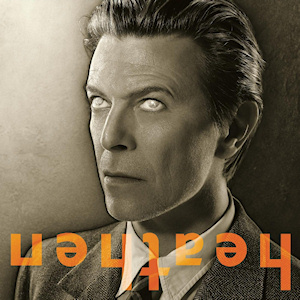 Bowie in the new millennium.
Bowie in the new millennium.
My thoughts: This album marked David Bowie's reunion with longtime collaborator Tony Visconti, who produced most of Bowie's work from 1969 to 1980. And sure enough, Heathen is the first album since Scary Monsters (1980) that sounds like it could have been made during David's classic period. I enjoyed this 23rd album so much the first time I heard it, I almost didn't trust my own reaction. Could it really be so good or were my ears and my brain playing tricks on me?
In the course of doing this project, I basically sleepwalked through seven consecutive Bowie albums from Tonight (1984) through Hours (1999). I casually shrugged off 15 years' worth of content, including some wild stylistic experiments and ambitious concept albums. I perked up for the punchy, hyperkinetic Earthling (1997), but, for the most part, I couldn't really get too excited about the other albums from this era. Heathen was the first record since Let's Dance (1983) that made me want to pay attention.
Keep in mind, nothing on Heathen made me forget about "Life on Mars?" or "Changes" or "Space Oddity." Nothing here is quite as catchy or memorable as those classics. While this album generated a few singles ("Slow Burn," "Everybody Says Hi," "I've Been Waiting for You"), even these tracks are probably best enjoyed in their original context. Heathen is somehow more than the sum of its parts. Over the course of twelve songs, Bowie frets about the state of the world, casts an anxious eye toward the future, and looks back on his own life and his own relationships with a mixture of longing and regret. Bowie probably had a lot on his mind in 2002. This was his first album of the new millennium, his first since 9/11, and his first since the death of George Harrison.
The Chemical X that makes this record work (at least for me) is Tony Visconti. Bowie collaborated with many musicians and producers over the course of his career, but none understood him better than Visconti. In particular, Visconti knew how to use strings effectively on a Bowie LP, which is to say sparingly. There is something magical about the sound of Bowie's '70s albums that is largely missing from his '80s and '90s albums. Heathen brings it back.
I have the oddest thoughts when I listen to David Bowie's albums. Today, while listening to Heathen, I began to imagine David Bowie forming a Traveling Wilburys-type supergroup with Lou Reed, Morrissey, Leonard Cohen, and Robert Smith. Together, they could make the gloomiest, doomiest record ever.
POSTSCRIPT. I normally don't dip into the Bowie marginalia or apocrypha. In fact, I had a rather sour experience with the Black Tie White Noise (1993) bonus tracks last Thursday. But the version of Heathen that I found contained some extra songs at the end, so I gave these a listen with the understanding that they would not affect my overall rating of the album. Ultimately, while the remixes (by Moby and Air) were too timid for my taste, some of the other ancillary tracks from the Heathen sessions were strong enough to have made the main album. Bowie might have released them as a standalone EP, but I guess that wasn't his style.
Next: Reality (2003) var infolinks_pid = 3415273; var infolinks_wsid = 0;
Published on September 23, 2025 03:00
September 22, 2025
My Month of Bowie, day 22: 'Hours' (1999)
 Physician, heal thyself! David Bowie closes out the '90s with Hours.
Physician, heal thyself! David Bowie closes out the '90s with Hours.The album: Hours (Virgin 1999)
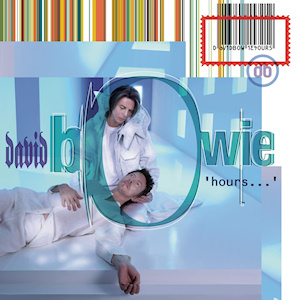 An album for the VH-1 crowd.My thoughts: "What the hell is this?!"
An album for the VH-1 crowd.My thoughts: "What the hell is this?!"That's a question I've asked at the start of several David Bowie albums, and I asked it again when listening to Hours for the first time. I know that Bowie loves to switch things up and make each LP sound like the opposite of the one that immediately preceded it, but he still caught me off-guard with his 22nd record, his last major release of the '90s. What shocked me this time around was the opening track and first single, "Thursday's Child." Namely, I couldn't believe the erstwhile Ziggy Stardust would start an album with a track this, well, wussy and anemic. This is some background-y, VH-1 adult contemporary stuff. Bowie used to throw darts in lovers' eyes; now he's throwing cotton balls at lovers' feet.
Worse yet, "Thursday's Child" is the first track I've heard this month in which Bowie's vocal seems noticeably off, like milk that has just started to go bad. As Randy Jackson used to say: "A little pitchy, dawg." My advice to Bowie and his producer, ex-Tin Machine bandmate Reeves Gabrels, would have been to rethink this entire track, using 1970s Memphis soul as the template. I'd want David to do his best Al Green impression, and I'd want Reeves to give me a nice, warm, Willie Mitchell-style arrangement. I don't want any synths within a hundred miles of this thing. (Frankly, I'm done with synths altogether on Bowie's records.) The song itself is otherwise perfectly acceptable in terms of its lyrics and melody.
In fact, the saving grace of Hours is David Bowie himself. Even on an off day—and I wouldn't count Hours among his best records—he's still an interesting guy to spend time with. Every once in a while, he'll hit you with a lyric or even just a chord change that you didn't see coming. I'd say that, on this album, David was thinking about old age, death, and what comes after that. He still had another 17 years to live after this, but 17 years isn't eternity. I think he was planning ahead when he made this LP. Call it estate planning. You can really hear this on "Seven" with its refrain: "I got seven days to live my life or seven ways to die."
Musically, Hours stays mired in that midtempo, middle-aged malaise that came to dominate Bowie's '90s output. Fortunately, from time to time, the guitars will come swooping in like Valkyries. The seven-minute opus "If I'm Dreaming My Life" even has a little bit of '70s Pink Floyd grandeur to it. But my favorite track on this disc was probably "The Pretty Things Are Going to Hell," largely because it made me want to write a "Weird Al"-style parody called "The Brady Kids Are Going to Hell."
Come to think of it, it's strange that "Weird Al" Yankovic never did a Bowie song parody or even a style parody. And I'm not the only one who's noticed this. Certainly, there are Bowie tracks that would have lent themselves to the "Weird Al" treatment. Nothing on Hours, but maybe "Rebel Rebel" from Diamond Dogs (1974) or "Modern Love" from Let's Dance (1983). For the former, I'm thinking "Robble Robble" (about the Hamburgler) or "Barney Rubble." For the latter, I'd suggest "Modern Lunch." Failing that, he could have done a polka medley of Bowie songs, like he did with The Rolling Stones on "The Hot Rocks Polka" (1989). "Polka from Mars," anyone?
Next: Heathen (2002) var infolinks_pid = 3415273; var infolinks_wsid = 0;
Published on September 22, 2025 03:00
September 21, 2025
My Month of Bowie, day 21: 'Earthling' (1997)
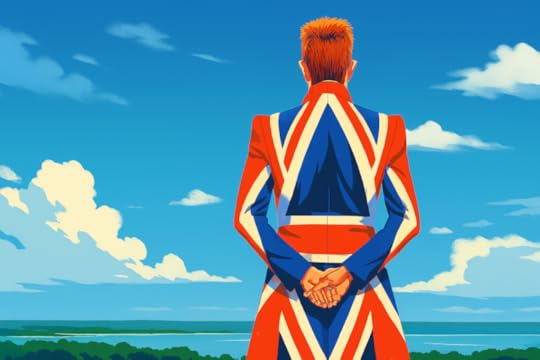 And David Bowie surveyed his kingdom. And he was pleased.
And David Bowie surveyed his kingdom. And he was pleased.The album: Earthling (Virgin, 1997)
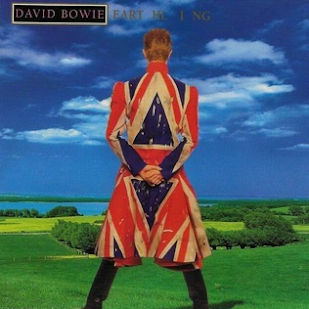 Don't turn around!My thoughts: Boom-BAP-ba-doom-a-doom-BAP! Boom-BAP-ba-doom-a-doom-BAP! Remember when that sound was everywhere? For a while in the 1990s, it seemed like every other song you heard on the radio or on MTV began with those same overcaffeinated drums. Jungle music, they called it. Or drum and bass. Were those the same thing? I forget. Whatever you call it, David Bowie was certainly paying attention in 1997, because the boom-bap-a-doom drums are all over his twenty-first studio album, Earthling. The whole thing sounds like
an episode of The Powerpuff Girls
. (That show debuted the very next year.)
Don't turn around!My thoughts: Boom-BAP-ba-doom-a-doom-BAP! Boom-BAP-ba-doom-a-doom-BAP! Remember when that sound was everywhere? For a while in the 1990s, it seemed like every other song you heard on the radio or on MTV began with those same overcaffeinated drums. Jungle music, they called it. Or drum and bass. Were those the same thing? I forget. Whatever you call it, David Bowie was certainly paying attention in 1997, because the boom-bap-a-doom drums are all over his twenty-first studio album, Earthling. The whole thing sounds like
an episode of The Powerpuff Girls
. (That show debuted the very next year.)You could accuse Bowie of merely following some late '90s musical fads on Earthling, and you wouldn't be wrong, necessarily. But I think you'd also be missing out on one of the most fun records he'd done since Let's Dance (1983). Goddamn, even that was 14 years old by the time Earthling came out. How time does fly. This is another one of those albums where I think it actually pays to be a Bowie novice rather than a Bowie expert. Uncultured dumdum that I am, I can appreciate the sci-fi sugar rush of these nine songs. Lyrically, Bowie is pouty and pessimistic as usual—always a rain cloud, this guy—but the music isn't lugubrious or morose in the slightest. It's propulsive.
The one song I already knew from Earthling was the album's penultimate track: "I'm Afraid of Americans." Bowie cowrote this doomy, paranoid ditty with Brian Eno, and it might be one of his very last songs to have a life outside of the album it originally came on. Part of the reason for that is because the single version was remixed by Bowie acolyte Trent Reznor. But I think "I'm Afraid of Americans" stands on its own as one of David's catchiest and most purposeful songs of the entire decade. It's one of the rare times in the '90s that David Bowie sounded like a man on a mission, the way he did in the '70s.
But I was entertained by Earthling all the way through, even if those aforementioned drums do tend to become repetitive over the course of nine songs. I'd never describe this LP as "pretty," but there are some exquisite barbershop harmonies on "Looking for Satellites" that my ears appreciated. Elsewhere, on Outside's final song, "Law (Earthlings on Fire)," there's a repeated, spoken refrain: "I don't want knowledge, I want certainty." A reasonable conclusion, I'd say. The first time I heard this song, however, I thought he was saying, "I don't want knowledge, I want succotash." I think I like my line better.
Next: Hours (1999) var infolinks_pid = 3415273; var infolinks_wsid = 0;
Published on September 21, 2025 03:00
September 20, 2025
My Month of Bowie, day 20: 'Outside' (1995)
 David Bowie's Outside is a record that'll really get under your skin.
David Bowie's Outside is a record that'll really get under your skin.The album: Outside (Virgin Records, 1995)
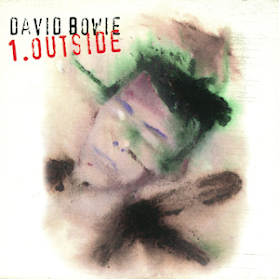 Fire walked with him.My thoughts: Normally, when I review these David Bowie albums, my strategy is to do no research whatsoever. I just press play and hit the road. I generally listen to these albums while I go for a nice, long walk in the park. I've gotten a lot of steps in because of David this month.
Fire walked with him.My thoughts: Normally, when I review these David Bowie albums, my strategy is to do no research whatsoever. I just press play and hit the road. I generally listen to these albums while I go for a nice, long walk in the park. I've gotten a lot of steps in because of David this month.But today, as I listened to his twentieth studio album, Outside, I realized something was definitely amiss. First of all, the album didn't end after 45 minutes or so, like David's albums usually do. None of the individual songs were really sticking in my head but just sort of blurring together. Also, there were more spoken interludes than ever, seemingly all of them done in funny voices. And when I glanced down at the track list, I noticed there were at least five tracks designated "Segue." All these horrible realities began to dawn on me. Oh, jesus, is this another concept album? With characters and a story and all that crap?
So I looked into it and, yeah, this is another one of those. David the theater kid strikes again. Outside has a subtitle, The Nathan Adler Diaries, and a sub-subtitle, A Hypercycle. Oh, good Christ! I just want some goddamned tunes; I don't want to go looking for clues. And if that's not bad enough, this thing goes on for 75 minutes! But this is the album that reunited David Bowie with Brian Eno, so there must be something valuable about it, right? Right?!
David went through many phases in his career, but this was one I forgot about: his Twin Peaks phase. I guess he was really into that show. He was even in the movie Twin Peaks: Fire Walk With Me (1992). It's now time for a confession. Although I consider myself a David Lynch fan and have seen pretty much all of his feature films, I've never gotten through even a single episode of Twin Peaks. I keep meaning to, but there's just too much of it. I don't have room in my life. I feel weirdly guilty about that.
Outside is not actually part of the Twin Peaks universe, but the album centers around a very Dale Cooper-sounding detective named Nathan Adler investigating the murder of a teenage girl named Baby Grace in a strange, fictional place called Oxford Town. Those spoken interludes I mentioned are monologues by eccentric townsfolk. Does all of this sound familiar? The album's cover, a smeary self-portrait of David Bowie, even looks like the iconic image of Laura Palmer's corpse.
 Wrapped in plastic: a side-by-side comparison of Twin Peaks and Outside.
Wrapped in plastic: a side-by-side comparison of Twin Peaks and Outside.Musically, Outside reminds me a lot of Nine Inch Nails' noise-rock epic The Downward Spiral (1994), except with weaker songs. And there are certain tracks (like the single "Hallo Spaceboy") that sound like they'd be on Tyler Durden's workout playlist. Which is remarkable because The Dust Brothers' landmark Fight Club soundtrack didn't come out until 1999. I guess what I'm driving at is that this album is very much of its time. You should listen to it on a Discman while drinking Surge outside a Blockbuster.
There's something paradoxical about David Bowie's career that I'm just realizing now, twenty albums into this project. He was so prone to experimentation, provocation, and self-indulgent oddness throughout his entire career that weirdness was his normalcy. What would be an anomaly in another artist's career—imagine if Bruce Springsteen had made this LP—is just another average Tuesday for David Bowie. After a while, the extraordinary becomes workaday. Do you suppose the Addams Family ever got bored of being the Addams Family?
You know what would have been a real experiment for David Bowie at this point in his career? An album of romantic ballads. Or a country album. That would have been daring.
Next: Earthling (1997)
var infolinks_pid = 3415273; var infolinks_wsid = 0;
Published on September 20, 2025 03:00
September 19, 2025
My Month of Bowie, day 19: 'The Buddha of Suburbia' (1993)
 David Bowie released two albums in 1993. This was the second.
David Bowie released two albums in 1993. This was the second.The album: The Buddha of Suburbia (Arista, 1993)
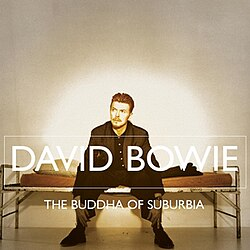 An obscure Bowie LP.My thoughts: Okay, here's a weird one, a little glitch in the matrix. When David Bowie was promoting his big comeback album Black Tie White Noise (1993), he sat down for a chat with British novelist Hanif Kureishi for an article in Andy Warhol's Interview magazine. Kureishi had written a novel called The Buddha of Suburbia (1990), set in the 1970s and at least partially influenced by Bowie. When Kureishi's novel was adapted as a four-part miniseries on the BBC in 1993, guess who ended up doing the music? That's right: our man, David Robert Jones.
An obscure Bowie LP.My thoughts: Okay, here's a weird one, a little glitch in the matrix. When David Bowie was promoting his big comeback album Black Tie White Noise (1993), he sat down for a chat with British novelist Hanif Kureishi for an article in Andy Warhol's Interview magazine. Kureishi had written a novel called The Buddha of Suburbia (1990), set in the 1970s and at least partially influenced by Bowie. When Kureishi's novel was adapted as a four-part miniseries on the BBC in 1993, guess who ended up doing the music? That's right: our man, David Robert Jones.So the album I'm reviewing today is the soundtrack to a miniseries I haven't seen based on a book I haven't read. Maybe Kureishi's novel was more popular over there than it was over here. It must've been, since the miniseries didn't even make it to American TV in 1993. Honestly, I was almost tempted to skip this one. After all, I didn't review David's soundtracks for Christiane F. (1981) or Labyrinth (1986) either. (Those LPs both exist.) But Wikipedia counted The Buddha of Suburbia as one of David's 26 canonical studio albums. And besides, David himself has said it's his favorite of his own records. What the hell? Let's do this.
You might figure that, since it's meant to accompany a TV miniseries, The Buddha of Suburbia would be mostly instrumentals. And, yeah, there are a handful of those on the album, including a curiously quiet, six-and-a-half-minute piece called "Ian Fish, U.K. Heir." As for the other instrumentals on this album, "South Horizon" and "The Mysteries," I'd describe them as a combination of jazz and techno influences. Both of them go on a bit too long for my taste, unfortunately. You could think of these tracks as updated versions of the ambient music Bowie made with Brian Eno in the late 1970s. But they also sound like they could work in the context of a fashion show, with models in expensive, uncomfortable clothes strutting up and down the catwalk on impractically high heels.
What really distinguishes The Buddha of Suburbia, though, are its vocal numbers. These are as strong as anything on Black Tie White Noise, for my money, though I'm not 100% sure we needed to reprise the title song in its entirety at the end of the album. Supposedly, the second iteration of the song features Lenny Kravitz, but I was hard-pressed to tell the difference between the two versions. There are also some interesting ideas, musically and lyrically, on the track "Sex and the Church," but this one drones on for six-and-a-half minutes as well and doesn't have much new to say in its last couple of minutes.
Was The Buddha of Suburbia worth investigating? Sure, but it's probably not one I'll be returning to once this project is over. At least not for a while. Frankly, if I'd been Bowie's manager in 1993, I might have suggested he ditch the instrumentals altogether, pare the vocal numbers down a little, and release the whole thing as a scrappy little EP instead of a rather bloated LP. Bowie is often cited as a forerunner of punk, but punk tends to get to the bloody point.
Next: Outside (1995) var infolinks_pid = 3415273; var infolinks_wsid = 0;
Published on September 19, 2025 03:00
September 18, 2025
My Month of Bowie, day 18: 'Black Tie White Noise' (1993)
 In 1993, David Bowie released his first solo album in six years.
In 1993, David Bowie released his first solo album in six years.The album: Black Tie White Noise (Savage, 1993)
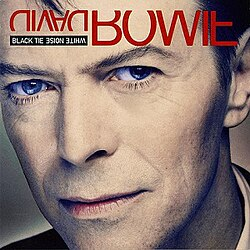 Guess who's back, back again?My thoughts: After a couple of critical duds in a row, namely Tonight (1984) and Never Let Me Down (1987), David Bowie evidently thought it was time for a change. Had he gotten soft in middle age? Lost his edge? Lost his way? Audiences and critics were wondering if the Thin White Duke still had anything left to say to us, so many years after that first communique from Major Tom.
Guess who's back, back again?My thoughts: After a couple of critical duds in a row, namely Tonight (1984) and Never Let Me Down (1987), David Bowie evidently thought it was time for a change. Had he gotten soft in middle age? Lost his edge? Lost his way? Audiences and critics were wondering if the Thin White Duke still had anything left to say to us, so many years after that first communique from Major Tom.Before he'd been marketed (successfully) as a solo artist, David Bowie was a member of numerous, short-lived rock groups: The Kon-Rads, The King Bees, The Mannish Boys, etc., etc. Maybe getting back to his roots would do the trick. So his next major endeavor was forming a noisy new four-piece ensemble, Tin Machine, and recording two albums with them, as well as touring. I'm somewhat curious about this material, but I'm skipping it for now. After all, this series is called My Month of Bowie, and if I included absolutely everything in the man's discography, it would take significantly longer than a month. Hell, David's live albums alone number in the double digits, including at least one he made with Tin Machine!
The point is, David needed some time to recharge his batteries. Tin Machine allowed him to do that. In 1993, six long years after Never Let Me Down, he felt it was time to come back with a new solo album on a new label. And he even reunited with Nile Rodgers, the producer of Let's Dance (1983), i.e. the last Bowie album people had actually enjoyed. I keep seeing the 1980s described as a period of "low creativity" for Bowie. I don't find that to be true. He was still creating things, but his ideas were getting buried in cheesy '80s production. It happened to plenty of artists back then.
So does Black Tie White Noise right the ship? Yes and no. In the main, I suppose it's more pleasing to the ears than Tonight and Never Let Me Down, but I still sense a lack of purpose on much of this LP, especially the back half. Black Tie sounds extremely optional to me, while Bowie's very best music sounded mandatory. It just so happened that I listened to this album the same day I saw Spinal Tap II: The End Continues (2025). There's a scene in that film in which David St. Hubbins (Michael McKean) proudly declares that he won a "Holdie" award for recording the best on-hold music. Well, I think a few of the tracks on Black Tie White Noise would have put David Bowie in contention for a "Holdie" of his very own.
What's there to talk about here? Black Tie is Bowie's first solo album of the grunge era, but you'd hardly guess it. Instead of digging Soundgarden and Nirvana, it sounds like Bowie had been listening to a lot of Lisa Stansfield before recording his eighteenth album. Remember that Stansfield made her name with a Barry White-style song called "All Around the World." She took Barry's signature soulful sound of the '70s and updated it with new jack swing production elements. It's conceivable to me that David Bowie heard that song and thought, "Yes, that's what I'd like for my album." You can especially hear this on the title track of Black Tie White Noise, featuring the silky smooth vocals of R&B loverman Al B. Sure.
Look, there's nothing exceptionally wrong with Black Tie White Noise. It's just that there's nothing exceptionally right with it either. It's an hour of competent pop. If George Michael had put out this exact same album in 1993, no one would have batted an eye. To me, a new Bowie album should be an occasion for copious eye-batting. But it's all so goddamned tasteful and well-mannered. In retrospect, Bowie was giving us some clues with the album's title. "Black tie" is what a wealthy man would wear to a formal event, and "white noise" is that pleasant drone people use to fall asleep. Put those together and you have this album.
P.S. I had a rare technical problem in putting together this review. When I originally went looking for this album, I inadvertently found a disc of Black Tie outtakes and remixes and somehow thought that was the actual record! So I listened to it and thought, "This was Bowie's comeback album?!" I didn't see how that could be possible. So I dug a little deeper and found the real LP. Whoops! (By the way, unless you're a completist superfan, don't bother with the extras for this album. They're not worth much.) This setback may have soured me somewhat on the album, so keep that in mind as you read my review.
Next: The Buddha of Suburbia (1993) var infolinks_pid = 3415273; var infolinks_wsid = 0;
Published on September 18, 2025 03:00
September 17, 2025
Ed Wood Wednesdays, week 243: The Erotic World of A.C. Stephen (1999) [PART 1]
 Steve Apostolof, aka A.C. Stephen, has his day in the sun.
Steve Apostolof, aka A.C. Stephen, has his day in the sun."Find a penny, pick it up, and all day long you'll have good luck." Remember that one?
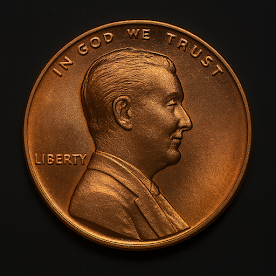 Ed Wood on a lucky penny.Since pennies are worth so little today, you have two choices when you find one lying on the floor or the ground somewhere: pick it up or leave it be. Personally, I'm a penny picker-upper, and I think it's because of that little rhyme we all learned as children. It's somehow comforting to think that these essentially-worthless little coins might be good luck talismans. It redeems them somehow. Ennobles them.
Ed Wood on a lucky penny.Since pennies are worth so little today, you have two choices when you find one lying on the floor or the ground somewhere: pick it up or leave it be. Personally, I'm a penny picker-upper, and I think it's because of that little rhyme we all learned as children. It's somehow comforting to think that these essentially-worthless little coins might be good luck talismans. It redeems them somehow. Ennobles them.Ed Wood is the lucky penny of directors, except he's a lucky penny that we keep discarding and rediscovering in an endless cycle. Most people look at Eddie and see only a talentless drunk who made cheap, bad movies—a one-cent piece not even worth picking up—but every once in a while, some observant passerby spots him and decides that, yes, it's worth the effort to reach down and retrieve him from the pavement.
Interest in Ed Wood remained high throughout the 1990s, and the spotlight on Ed was wide enough that it shone on some of Eddie's collaborators and contemporaries. Case in point: Stephen C. Apostolof aka A.C. Stephen (1928-2005), the Bulgarian-born softcore director with whom Ed made eight movies between 1965 and 1978. Ed served as a screenwriter, assistant director, and even occasional actor in Steve's movies. While Apostolof was understandably conflicted about being reduced to a supporting player in the Ed Wood saga, it's undeniable that Wood's notoriety brought Steve's movies back into public view for the first time in years.
At least two different companies, both quirky specialty labels, rereleased Apostolof's movies on home video back then. In Los Angeles, Rhino Home Video released its own edition of Orgy of the Dead (1965), plus three volumes called Saturday Night Sleazies (1990-1991). Meanwhile, up in Seattle, Something Weird Video launched its own series of Apostolof reissues. When I was doing my research for the book Dad Made Dirty Movies (2020), I frequently relied on those SWV editions of Steve's films, including Motel Confidential (1969) and The Divorcee (1969).
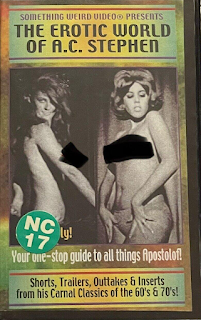 The tape I wanted.But one particular item remained elusive: a 1999 compilation tape from Something Weird called The Erotic World of A.C. Stephen. This is a career-spanning compilation of various Apostolof clips from the 1960s and 1970s, including footage from several of the films Steve made with Ed Wood. Somehow, I've never managed to snag a copy of this tape, and it's become a pretty rare collector's item in the quarter-century since its release. After getting sniped at the last second during an Ebay auction, I gave up.
The tape I wanted.But one particular item remained elusive: a 1999 compilation tape from Something Weird called The Erotic World of A.C. Stephen. This is a career-spanning compilation of various Apostolof clips from the 1960s and 1970s, including footage from several of the films Steve made with Ed Wood. Somehow, I've never managed to snag a copy of this tape, and it's become a pretty rare collector's item in the quarter-century since its release. After getting sniped at the last second during an Ebay auction, I gave up.Fortunately, reader and Ed Wood superfan Brendon Sibley was kind enough to digitize his copy of The Erotic World and send it my way. As with the last film Brendon sent me, the faux-Italian pseudo-documentary Mondo Oscenità (1966), there is simply too much here to cover in one article. Instead, I will make this into a two-part series, perhaps three if necessary. I very much thank Brendon for making this material available to me.
The generous, 108-minute compilation begins with a true rarity: the short film Bachelor's Dream aka The Bachelor's Dreams (1967). Steve Apostolof made this 33-minute featurette so that it could be shown in front of his own movies on double feature bills. That way, he could control both halves of the program and get all the box office receipts instead of only half. What's interesting to Ed Wood fans is that Bachelor's Dream is built around some black-and-white test footage that was originally shot by Bob Wilson during pre-production on Orgy of the Dead. Steve merely dusted off this footage, shot some new wraparound footage (some of it in color) to go with it, and added a flimsy storyline to tie it all together. Voila! Instant movie!
var infolinks_pid = 3415273; var infolinks_wsid = 0;
Published on September 17, 2025 03:00
My Month of Bowie, day 17: 'Never Let Me Down' (1987)
 David Bowie may, in fact, have let some people down with this album.
David Bowie may, in fact, have let some people down with this album.The album: Never Let Me Down (EMI America, 1987)
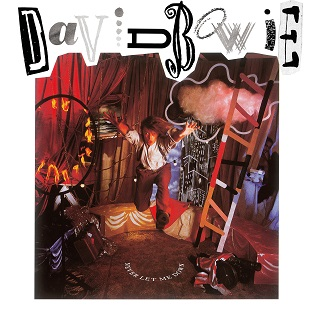 Even the album cover is busy.My take: Never Let Me Down is the first David Bowie album I was acutely aware of. All of his LPs from Station to Station (1976) to Tonight (1984) were released during my lifetime, but I would have been too young to take notice of them when they were new. By 1987, however, I was an adolescent whose family had basic cable. MTV was my life. I was probably even reading Rolling Stone (or at least skimming through it at the newsstand) by that point. So, yeah, when one of the biggest rock stars in the world put out a brand new, heavily-hyped album, I heard all about it.
Even the album cover is busy.My take: Never Let Me Down is the first David Bowie album I was acutely aware of. All of his LPs from Station to Station (1976) to Tonight (1984) were released during my lifetime, but I would have been too young to take notice of them when they were new. By 1987, however, I was an adolescent whose family had basic cable. MTV was my life. I was probably even reading Rolling Stone (or at least skimming through it at the newsstand) by that point. So, yeah, when one of the biggest rock stars in the world put out a brand new, heavily-hyped album, I heard all about it.I even knew that Never Let Me Down, while a commercial success, was not a critically well-received album. (The same could be said of Tonight.) Nevertheless, for the purposes of this project, I approached it with an open mind and no expectations. Or at least I tried to. It's becoming more and more difficult to remain unbiased as this project goes along, especially now that I have sixteen previous albums to compare this one to.
Never Let Me Down finds Bowie still firmly ensconced in his "mall pop" era. Like other legacy acts of his generation, he was obviously struggling to update his sound for the '80s while still remaining true to himself. You can hear that same struggle in the Reagan-era music of Paul McCartney, The Rolling Stones, and other rock veterans. After two listens to Never Let Me Down, I'd say that David Bowie hadn't totally lost the knack as a songwriter or even as a singer, but he'd sure lost the knack as a record-maker. This guy released some of the most sonically-satisfying LPs of the 1970s, but Never is drowning in all of the worst musical ideas of the 1980s. At least he sounds more awake on this one than he did on Tonight.
To be fair, I cannot listen to the album the way it was intended in 1987. If you want to fully appreciate Never Let Me Down, you have to buy it on cassette from a Sam Goody, Record Town, or Tape World, then play it on a hot pink boombox with crappy speakers while applying copious amounts of hairspray and eye makeup. Under those circumstances, songs like "Beat of Your Drum" and "New York's in Love" would probably make a lot more sense. Most of the tracks on Never would also blend in perfectly on the soundtrack for a Steve Guttenberg action-comedy.
When you call an album Never Let Me Down, you're all but inviting critics to take potshots at you. Which they did. And I'm sure a few reviewers noted that, on this album, Bowie literally went from singing about "Heroes" to singing about "Zeroes." But "Zeroes" is a textbook example of a song that would have been much more engaging if Bowie had just recorded it in the early-to-mid-1970s. Only the cheeseball '80s arrangement lets it down (pardon the expression). Throughout this entire album, there are frequent guitar solos by David's longtime friend, Peter Frampton. I was ambivalent toward them. I could appreciate Frampton's skill as a musician, but these solos make a lot of the tracks on Never sound alike. Imagine the Miami Vice theme playing on an endless loop.
So what's salvageable here? Well, the album's first two tracks ("Day-In Day-Out" and "Time Will Crawl") are energetic and catchy, even if they both slightly outstay their welcome. The album's title track has a wistful, Lennon-esque quality, again nearly snuffed out by the overproduction. And then there's "Glass Spider," which starts with wonderfully pretentious spoken narration about some kind of giant spiderlike creature that goes stomping around China, devouring victims and turning their skeletons into keepsakes. Lord only knows what this all means, but we haven't had anything like it on a Bowie record since Diamond Dogs (1974). It's entertaining enough, but I couldn't help but think of Nigel Tufnel introducing "Stonehenge." ("In ancient times, hundreds of years before the dawn of history...")
I should mention that, in support of this very album, David Bowie embarked upon the incredibly ambitious and gloriously silly Glass Spider Tour, which featured (among other things) a gigantic spider looming over the stage. Critics huffed, but plenty of tickets were sold. I've looked at some of the footage, and it's mind-boggling. This show deserves an article of its own, but I simply don't have room for it in this project. Maybe somewhere down the line, I'll cover it.
For David Bowie, following this album and the tour, it was time to regroup and refocus. He spent the next few years with his side project, Tin Machine, before reemerging with a new studio album. Bowie went six years between solo records, an unprecedented gap for him. But like Punxsutawney Phil, he reemerged. What on earth would a David Bowie album sound like in a post-Nevermind (1991) world? We're about to investigate that very question.
P.S. I am led to understand there are multiple mixes of this album in circulation. With a project of this nature, I really only have time to listen to one version of each album and move on. Perhaps Bowie had second thoughts about the production of Never Let Me Down and stripped away some of the most egregious elements. One can only hope. Don't drown your food, David.
Next: Black Tie White Noise (1993) var infolinks_pid = 3415273; var infolinks_wsid = 0;
Published on September 17, 2025 03:00



